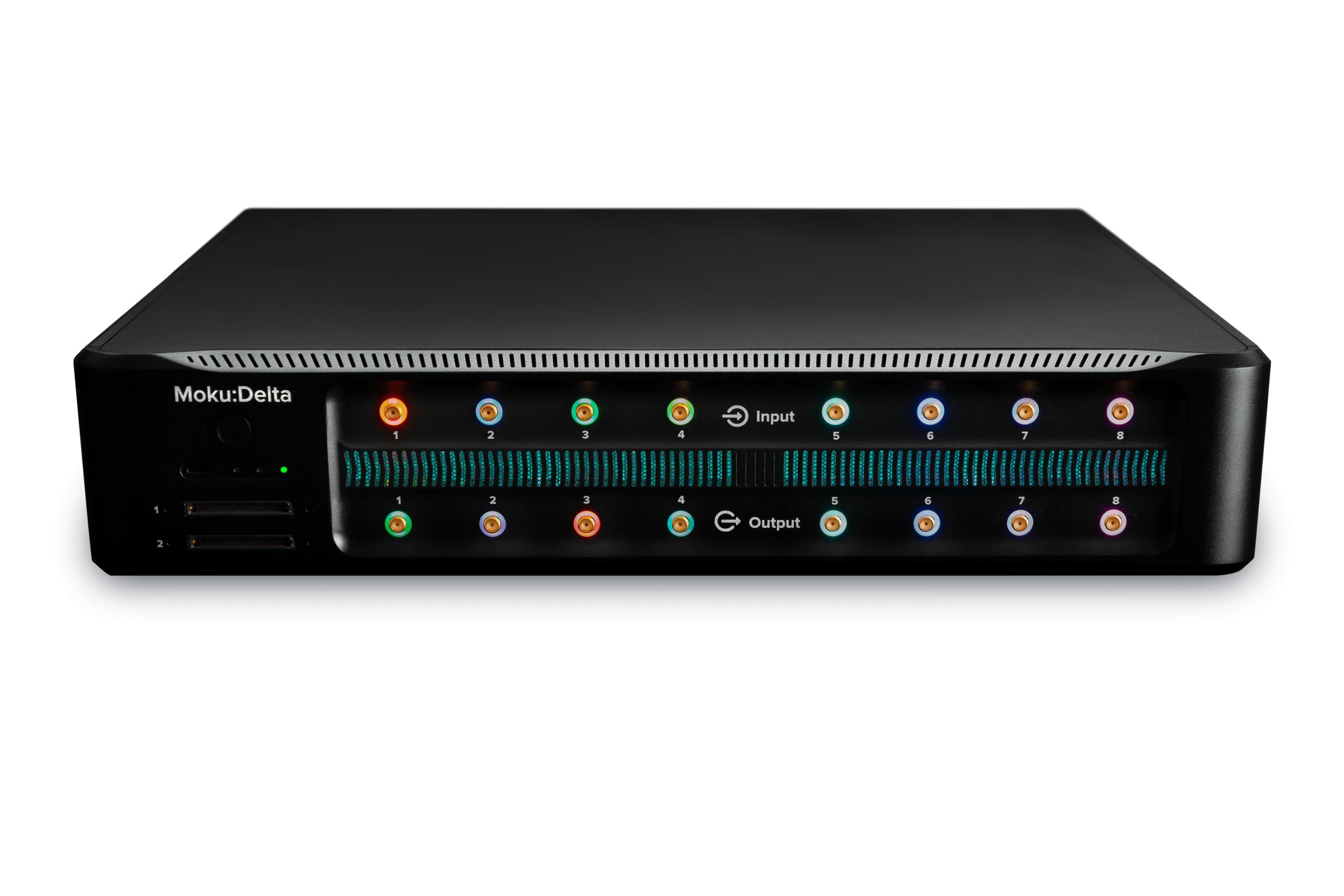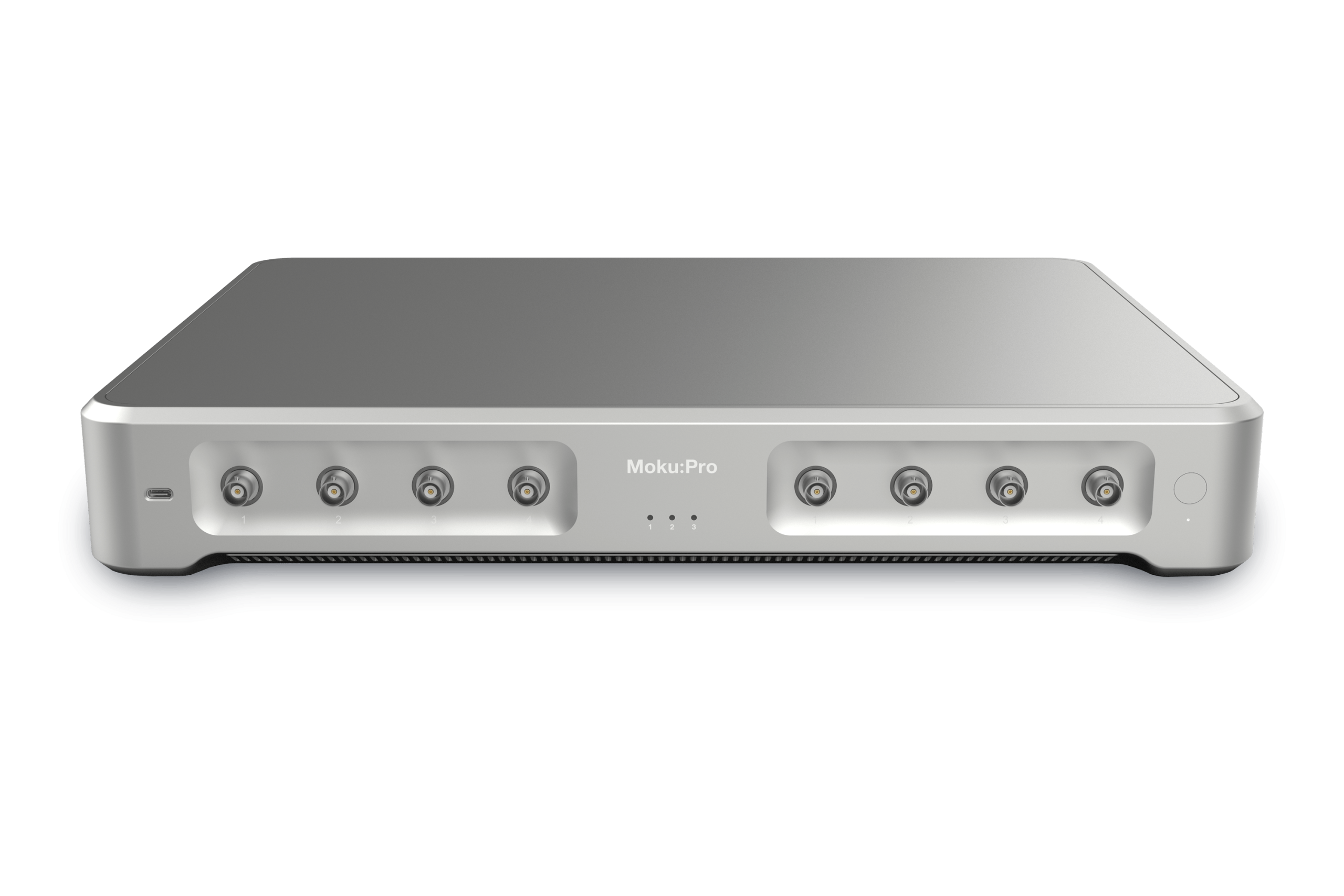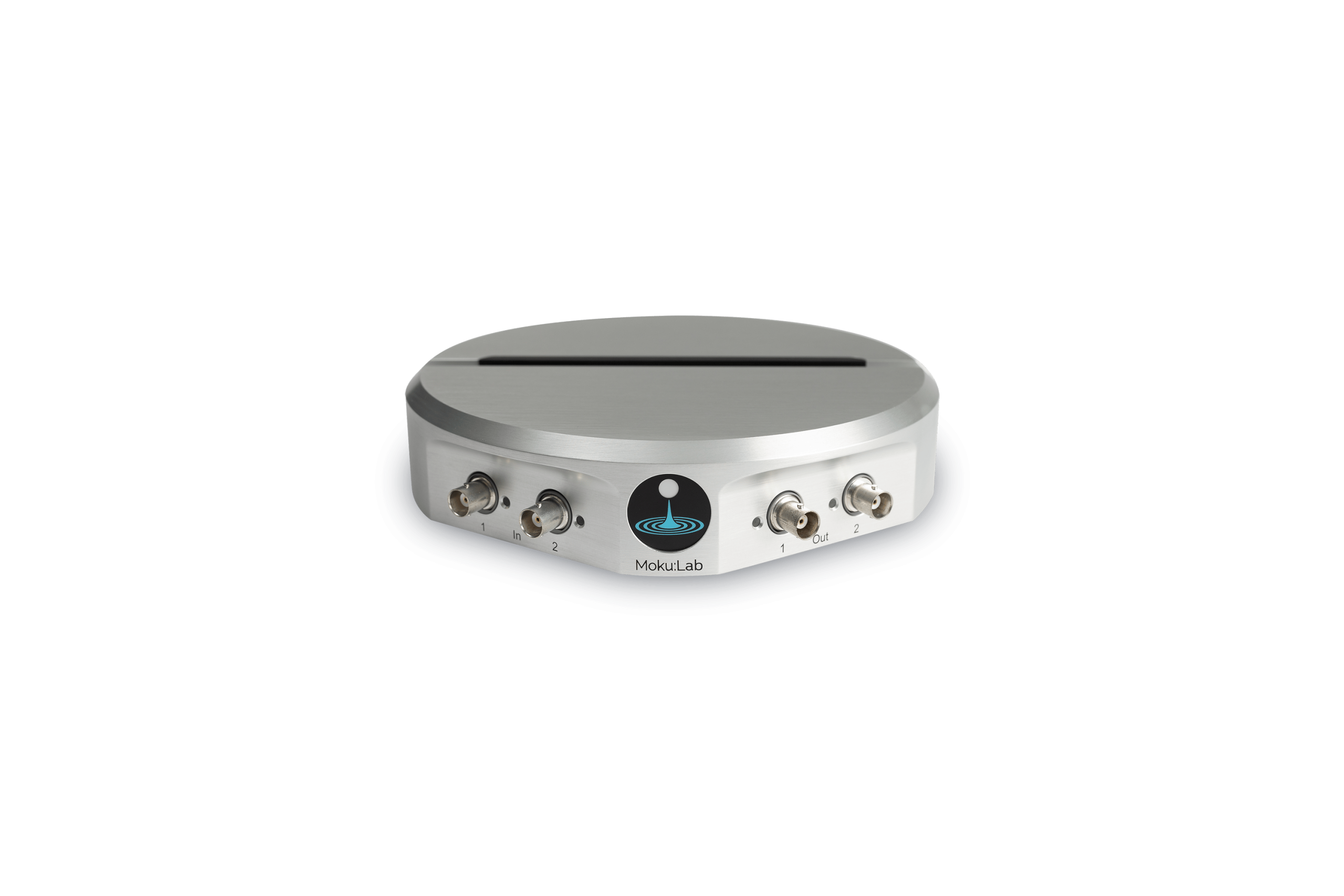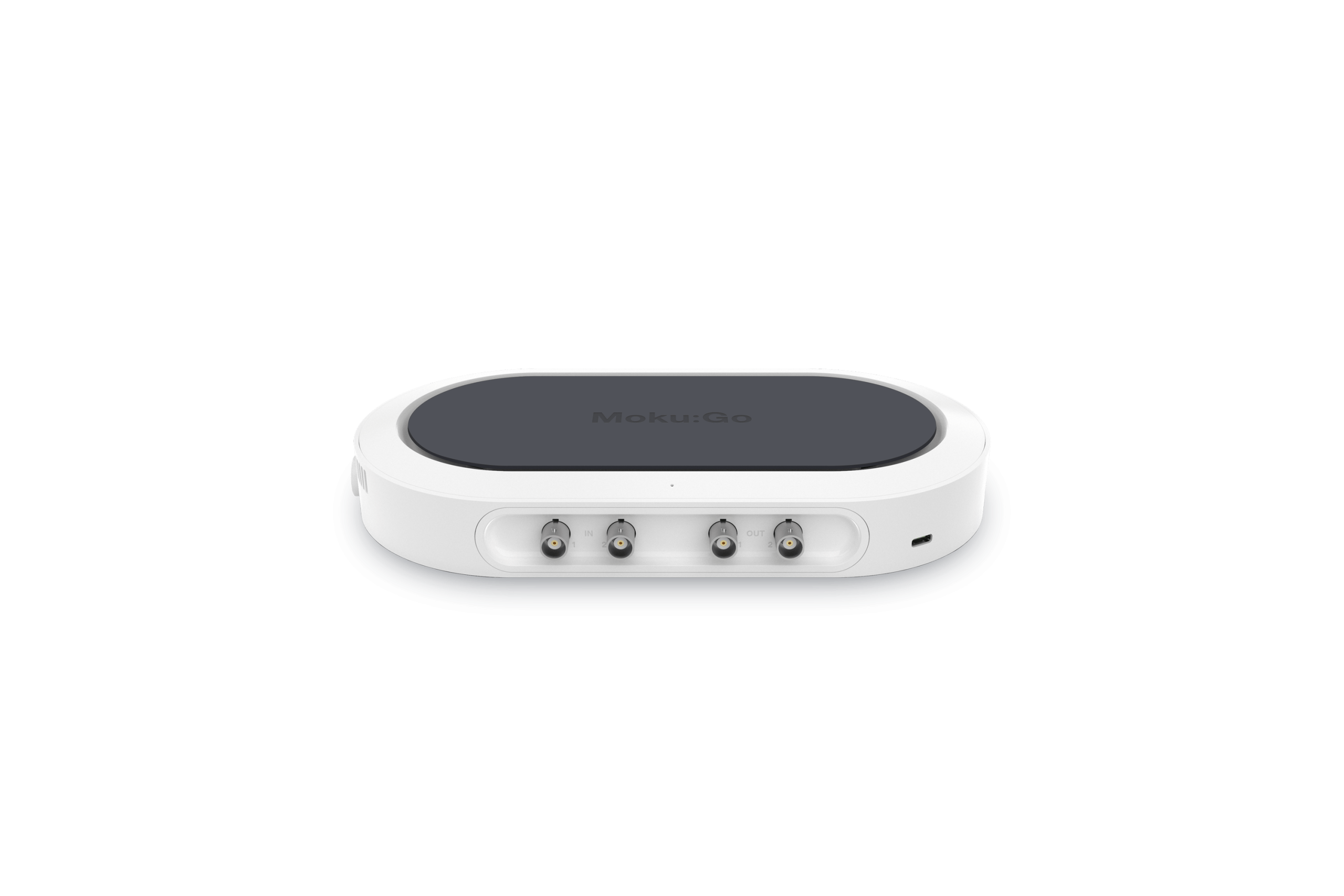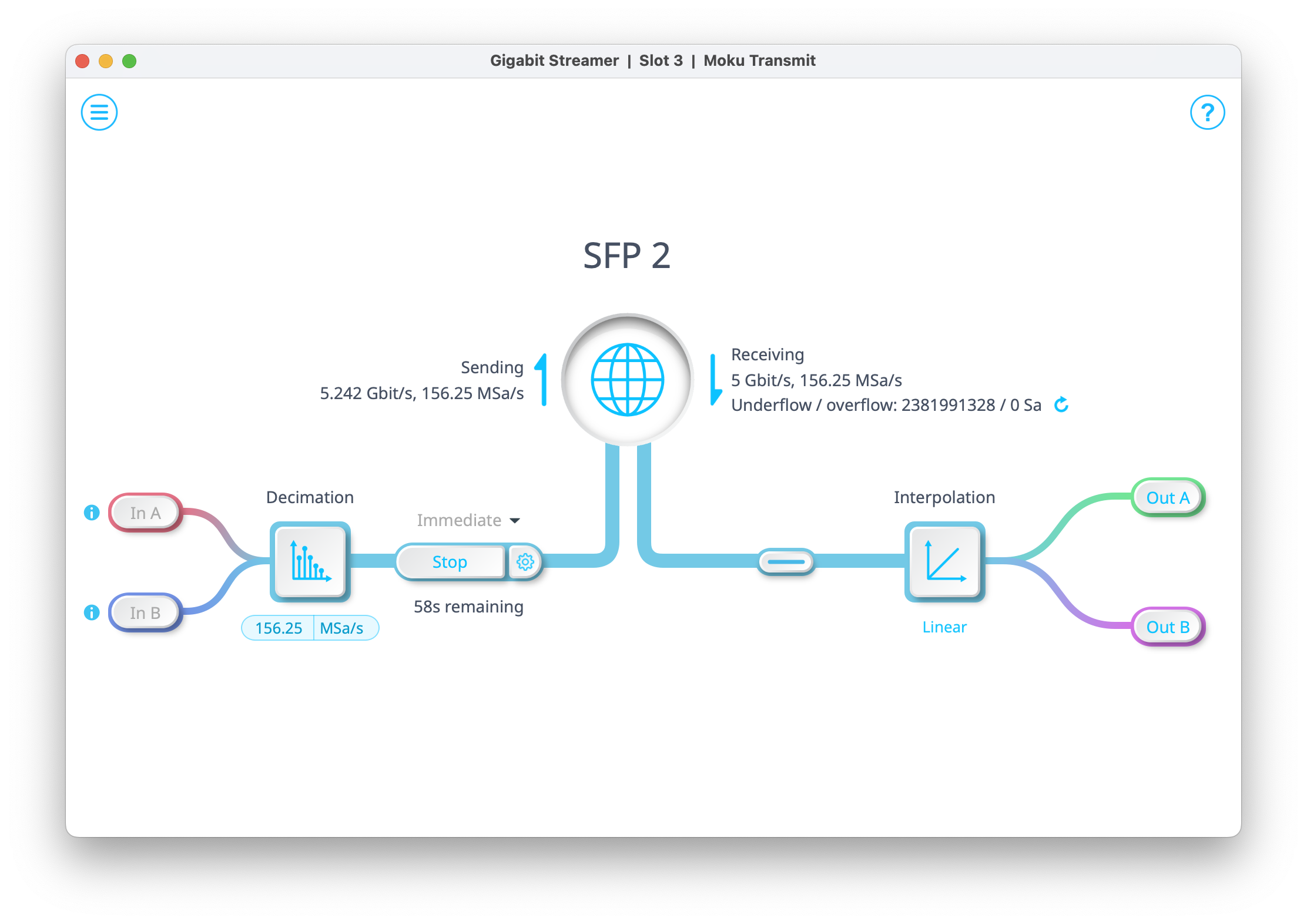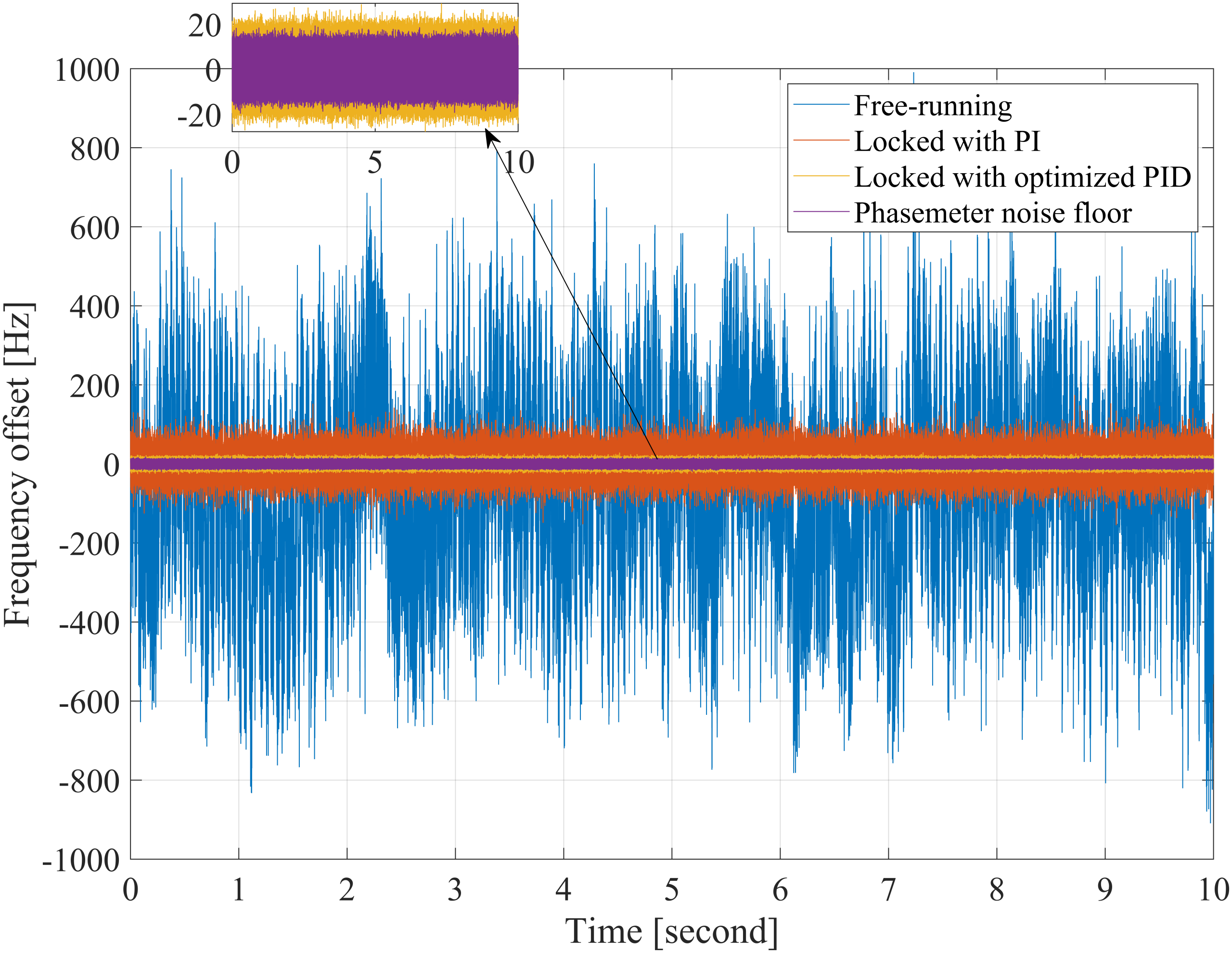Frequency Response Analyzer
The Moku Frequency Response Analyzer (FRA) drives a swept sine wave on the Moku outputs and simultaneously measures the received signal amplitude (or power) on the Moku inputs. The FRA can measure the transfer function of a system or device under test (DUT) and thus create a plot of amplitude and phase vs. frequency, commonly referred to as a Bode plot.
Power units
In order to measure impedance of a device under test (Zdut), we need to understand the power plots of the FRA. The FRA plots use units of dBm, or decibels relative to one milliwatt (1 mW); a convenient unit of measure in this situation. Defined as:
\(P_{dBm} = 10 \log_{10}({P / 1 \text{mW}}) \quad\) (1)
Where
\(P = V_{rms}^2 / R \quad\) (2)
The Moku FRA swept sine output can be set in volts (peak-to-peak) or dBm. We will use volts for the output. For a sinusoid,
\(V_{rms} = \frac{V_{pp}}{2\sqrt{2}} \quad\) (3)
substituting for \(V_{rms}\) in (2) gives
\(P = \frac{V_{pp}^2}{8R} \quad\) (4)
Expressed in dBm, scaling for mW, and knowing the Moku input impedance is 50 Ω gives:
\(10 \log_{10} \left( \frac{1 \text{V}^2}{8 \ times 50 \Omega} \times 1000 \frac{\text{mW}}{\text{W}} \right) = 3.979 \text{dBm} \)
Figure 1 shows use of the FRA to generate a \(1 \text{V_pp}\) sine wave with Moku Output 1 connected via direct coaxial to Input 1. The resulting amplitude is of course flat across frequency range (0-1 kHz) and at 4.050 dBm, very close to the calculated 3.979 dBm. The discrepancy equates to 1.7 mV (or 0.17%).

Figure 1: FRA plot of 1 Vpp driven directly in the Moku input
Impedance
Single-port measurement:
Now that the FRA power units are clear, we can measure an impedance.
In this first example we will measure Rdut of a simple 10 kΩ, 10% tolerance resistor. The effective circuit is:

Figure 2: Equivalent circuit
Note, Vout is 2 V, since this results in 1 V across load of 50 Ω.

Figure 3: FRA of 10 kΩ DUT, single port
Rearranging power equation (1) and substituting P from (4) we can state:
\(V_{in} = \sqrt{8 R_{in} \left( \frac{10^{P_{dB}/10}}{1000} \right)} \quad\) (5)
With measured Pdb of -35.821 dBm, we calculate Vin= 10.23 mV.
The resistor divider of Rdut and the Moku 50 Ω inputs and output in Figure 2 gives us:
\(\frac{V_{in}}{V_{out}} = \frac{R_{in}}{R_{dut}+R_{in} + R_{out}} \quad\) (6)
Thus
\(R_{dut} = \frac{V_{out} R_{in}}{V_{in}} – \left( R_{in} + R_{out} \right)\)
Solving gives Rdut = 9675 Ω.
A digital voltmeter (DVM) reading of this resistor showed 9750 Ω.
From this simple, one-resistor measurement we can conclude the Moku is accurate within 77 Ω (< 1%).
Low impedance measurement:
The example above used a standard 10% tolerance resistor. We can also measure a lower impedance to a high level of accuracy. To do this, we will use a 100 Ω, 0.005% tolerance high-precision resistor. Using the above method, we obtain a power magnitude plot (Figure 4)

Figure 4: FRA screen capture of 100 Ω, 0.005%, single port
Applying the measured power of -1.972 dBm to equations (5) & (7) we calculate Rdut to be 98.41 Ω. This agrees with the known value, but we can do better with a two-port measurement.
Two-port measurement:
In order to improve our measurement, we need to account for the loading of the DUT on the Moku 50 Ω output.
We can accomplish this with a two-port measurement whereby we utilize the second input port of the Moku to observe the actual applied signal level. Figure 5 shows an example hardware setup using Moku:Lab.
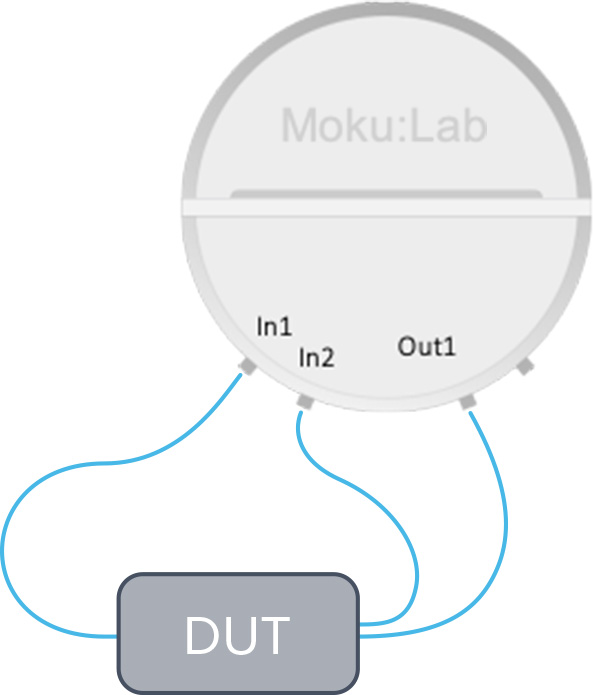
Figure 5: Two-port configuration using Moku:Lab
We can derive Rdut in Figure 6, from Ohm’s law:
\(V_2 = I_{dut} \left( R_{dut} + R_1 \right) \quad\) (8)
\(V_1 = I_{dut} R_1\); or \(I_{dut} = V_1/R_1 \quad\) (9)
Substitute (9) into (8):
\(V_2 = \frac{V_1}{R_1}\left (R_{dut} + R_1 \right)\)
or
\(R_{dut} = \frac{V_2}{V_1}R_1 – R_1 \quad\) (10)

Figure 6: Two-port equivalent circuit
We set up this two-port measurement with our tight tolerance 100 Ω, 0.005% resistor and captured the Moku FRA plot in Figure 7.

Figure 7: 100 Ω, two-port FRA capture
Note, we have used the FRA math channel to produce V2/V1. This is very quick and simple to configure on the iPad interface.
From (10) we see that we can calculate Rdut simply from the V2:V1 voltage ratio.
The FRA math channel has calculated the power ratio as 9.505 dBm and thus the voltage ratio is:
\(\frac{V_2}{V_1} = \sqrt{\text{Power ratio}}\)
\(= \sqrt{10^{0.9505}}\)
So we can apply (10) to obtain Rdut = 99.36 Ω.
We can now apply this 2 port method to the original 10 kΩ / 10% resistor; Figure 8 shows the FRA response.

Figure 8: 10 kΩ, two-port measurement
Using our established formula, the power ratio of 45.856 dBm gives and improved result of Rdut = 9762 Ω.
Summary
The Moku FRA can be used to make impedance measurements and determine the value of a resistance to a <1% accuracy.

The two-port method allows for the loading of the DUT and appears more accurate.
In part two, we move on to using the FRA to measure complex impedance, capacitance & inductance, and more complex systems and across frequency.
Moku demo mode
You can download the Moku app for macOS and Windows here. The demo mode operates without any hardware and provides an introduction to using Moku:Go or Moku:Pro.
Questions or comments?
Contact us at support@liquidinstruments.com.
